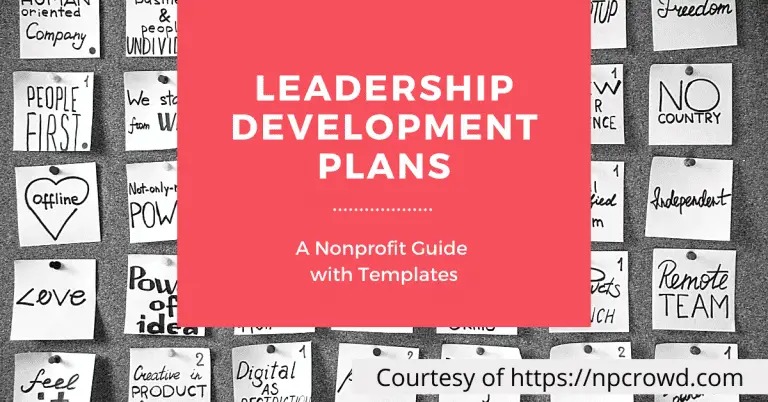Matrix Mapping for Nonprofits: Achieving More by Doing Less
Disclaimer: This post may contain affiliate links. These links, if used and purchases made, we may earn a small commission. These affiliate programs do not impact the recommendations we make or the resources we refer you to. Our focus is on providing you the best resources for your nonprofit journey.
Nonprofit organizations are tasked with the significant challenge of pursuing their missions while maintaining financial stability. Often, the pressure to do more with less can lead to unfocused efforts and limited results. In these situations, a powerful tool called a matrix map can come to the rescue.Matrix mapping is a visual tool introduced by Steve Zimmerman and Jeanne Bell in their book “The Sustainability Mindset: Using the Matrix Map to Make Strategic Decisions.” It provides an insightful way of evaluating an organization’s programs and activities to inform strategic decision-making. Let’s delve into how matrix mapping can help nonprofits achieve more by focusing their efforts.
What Is a Matrix Map?
A matrix map is a visual representation of an organization’s activities plotted on a graph, categorized by their impact on mission fulfillment and financial viability. By positioning each program or activity within the four quadrants of the map, leaders can gain a holistic view of how each contributes to or detracts from the organization’s sustainability.
The Quadrants of a Matrix Map
The matrix map consists of four quadrants, each representing a unique combination of mission impact and profitability:
- Stars: These are programs that have a high mission impact and generate significant revenue. These programs are the organization’s powerhouses.
- Heart: These programs are mission-critical but may not be financially profitable. They represent the core purpose of the organization and may rely heavily on fundraising or subsidies.
- Money Tree: These programs may not directly align with the core mission, but they generate substantial revenue, which can fund other programs.
- Stop Doing: Programs falling in this quadrant neither significantly contribute to the mission nor generate a significant profit. The organization should consider phasing out these activities to reallocate resources effectively.
How Matrix Mapping Creates Focus
Matrix mapping helps nonprofit organizations achieve more by doing less in the following ways:
- Resource Allocation: Matrix mapping helps nonprofits understand where resources are being expended and how to allocate them strategically to increase mission impact and financial sustainability.
- Strategic Decisions: With a matrix map, nonprofits can make informed decisions about the continuation, expansion, or termination of programs based on their position on the map.
- Fosters Dialogue: The matrix map is a tool that can foster constructive discussions among stakeholders about the organization’s strategic direction.

Steps to Create a Matrix Map
Creating a matrix map involves several steps:
- Identify and list all your organization’s programs and activities.
- Assess the mission impact of each program using criteria relevant to your organization.
- Calculate the net income generated by each program.
- Plot each program on the matrix according to its mission impact and profitability.
The exercise culminates in a meaningful conversation about the strategic implications of the map and the actions required to better align programs and activities with the organization’s mission and financial viability.
Unique Perspectives
When used effectively, a matrix map can provide a valuable shift in perspective for nonprofit organizations. This tool not only encourages nonprofits to evaluate their programs through the dual lens of mission fulfillment and financial viability, but it also fosters a growth mindset. It nudges organizations to continuously reassess their activities and make strategic adjustments, creating an environment that values sustainability and impact over a blind pursuit of growth.
Moreover, the beauty of a matrix map is its simplicity. It doesn’t require complex calculations or specialized expertise. Yet, it brings to the fore insightful strategic directions that might otherwise be missed in the daily bustle of nonprofit operations.
Matrix mapping can also act as a tool for improved communication and transparency within the organization. By visually demonstrating the impact and financial viability of each program, it can help employees, volunteers, and other stakeholders understand why certain programs are prioritized or phased out. This can foster a sense of collective ownership and accountability in the strategic decision-making process.
Finally, in a sector where passion and purpose are the driving forces, matrix mapping helps ensure that these sentiments are coupled with financial realism. By providing a clear picture of financial sustainability, it encourages nonprofits to balance their heart with their head, ensuring that they continue to serve their mission effectively, today and in the future.
FAQ
Q1: How often should a nonprofit update its matrix map?
A: Matrix mapping is not a one-time activity. As a nonprofit evolves, its programs may shift in terms of their mission impact and profitability. Therefore, updating the matrix map annually or whenever a significant programmatic change occurs is a good practice.
Q2: Can small nonprofits also benefit from matrix mapping?
A: Absolutely! Regardless of the size of the organization, matrix mapping can be an effective tool to inform strategic decision-making, create focus, and ensure the efficient use of resources.
Q3: How can a nonprofit handle “Stop Doing” programs that are favored by some stakeholders?
A: Open communication is key here. By explaining the rationale behind phasing out such programs and showcasing how resources can be better utilized, nonprofits can navigate these sensitive situations.
Q4: How can matrix mapping be used in conjunction with other strategic planning tools?
A: Matrix mapping can complement other strategic planning tools. For instance, a SWOT (Strengths, Weaknesses, Opportunities, and Threats) analysis can inform the matrix mapping process by identifying potential areas of program expansion or reduction. Similarly, a strategic plan can be informed by a matrix map by providing a clear view of where the organization should focus its efforts.
Sources
- Zimmerman, Steve, and Jeanne Bell. “The Sustainability Mindset: Using the Matrix Map to Make Strategic Decisions.” Jossey-Bass, 2014.
- “Visualizing Your Business Model” (PDF) Spectrum Nonprofit Services
- Bell, Jeanne, and Steve Zimmerman. “The Matrix Map: A Powerful Tool for Mission-Focused Nonprofits” Nonprofit Quarterly
- “How to Use Matrix Maps To Identify Organizational Impact” DonorBox
- “How Nonprofits Can Map Their Programs to Their Strategy” BridgeSpan Group







